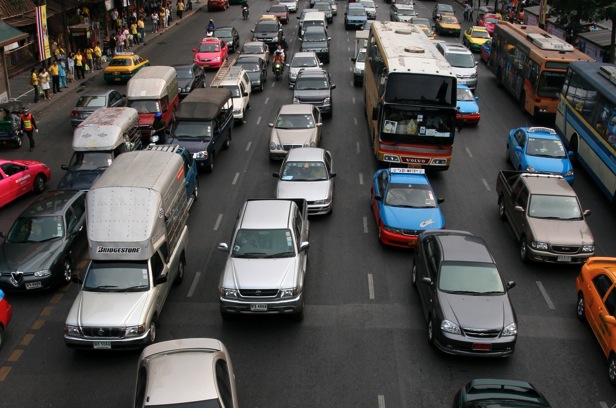M II A II R II K
Senior Member
Google Lobbies Nevada To Allow Self-Driving Cars
May 10, 2011
By John Markoff
Read More: http://www.nytimes.com/2011/05/11/science/11drive.html?_r=1&hp
Google, a pioneer of self-driving cars, is quietly lobbying for legislation that would make Nevada the first state where they could be legally operated on public roads. And yes, the proposed legislation would include an exemption from the ban on distracted driving to allow occupants to send text messages while sitting behind the wheel. The two bills, which have received little attention outside Nevada’s Capitol, are being introduced less than a year after the giant search engine company acknowledged that it was developing cars that could be safely driven without human intervention.
- Last year, in response to a reporter’s query about its then-secret research and development program, Google said it had test-driven robotic hybrid vehicles more than 140,000 miles on California roads — including Highway 1 between Los Angeles and San Francisco. More than 1,000 miles had been driven entirely autonomously at that point; one of the company’s engineers was testing some of the car’s autonomous features on his 50-mile commute from Berkeley to Google’s headquarters in Mountain View.
- Policy makers and regulators have warned that the technology is now advancing so quickly that it is in danger of outstripping existing law, some of which dates back to the era of horse-drawn carriages. New laws will be required, they argue, if autonomous vehicles are to become a reality. Policy analysts say Nevada is the first state to consider the commercial deployment of a generation of vehicles that may park themselves, perform automatic deliveries or even act as automated taxis on the Las Vegas casino strip.
- “What if I could take out my phone and say, ‘Zipcar, come here,’ †he asked an industry conference last year, “and a moment later the Zipcar came around the corner?†Google’s autonomous vehicle ambitions hint at an emerging vehicle-industrial complex in Silicon Valley. Mercedes, Volkswagen and other carmakers have laboratories in the region, I.B.M. has a battery development initiative, and the Nummi plant in Fremont, once a joint venture of General Motors and Toyota, has been reopened by Tesla.
.....

May 10, 2011
By John Markoff
Read More: http://www.nytimes.com/2011/05/11/science/11drive.html?_r=1&hp
Google, a pioneer of self-driving cars, is quietly lobbying for legislation that would make Nevada the first state where they could be legally operated on public roads. And yes, the proposed legislation would include an exemption from the ban on distracted driving to allow occupants to send text messages while sitting behind the wheel. The two bills, which have received little attention outside Nevada’s Capitol, are being introduced less than a year after the giant search engine company acknowledged that it was developing cars that could be safely driven without human intervention.
- Last year, in response to a reporter’s query about its then-secret research and development program, Google said it had test-driven robotic hybrid vehicles more than 140,000 miles on California roads — including Highway 1 between Los Angeles and San Francisco. More than 1,000 miles had been driven entirely autonomously at that point; one of the company’s engineers was testing some of the car’s autonomous features on his 50-mile commute from Berkeley to Google’s headquarters in Mountain View.
- Policy makers and regulators have warned that the technology is now advancing so quickly that it is in danger of outstripping existing law, some of which dates back to the era of horse-drawn carriages. New laws will be required, they argue, if autonomous vehicles are to become a reality. Policy analysts say Nevada is the first state to consider the commercial deployment of a generation of vehicles that may park themselves, perform automatic deliveries or even act as automated taxis on the Las Vegas casino strip.
- “What if I could take out my phone and say, ‘Zipcar, come here,’ †he asked an industry conference last year, “and a moment later the Zipcar came around the corner?†Google’s autonomous vehicle ambitions hint at an emerging vehicle-industrial complex in Silicon Valley. Mercedes, Volkswagen and other carmakers have laboratories in the region, I.B.M. has a battery development initiative, and the Nummi plant in Fremont, once a joint venture of General Motors and Toyota, has been reopened by Tesla.
.....







